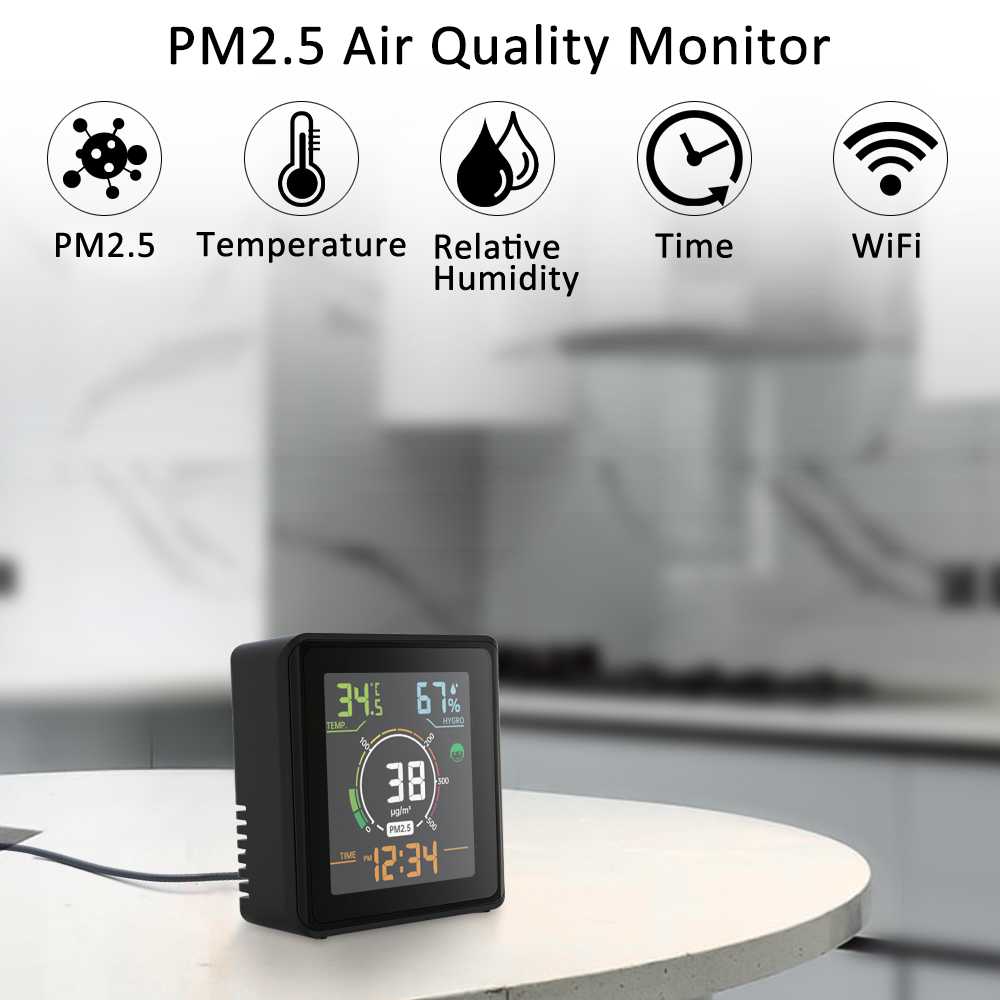What is PM2.5, or particulate matter 2.5?
Fine particles, also known as particulate matter 2.5 (PM2.5), are microscopic airborne particles or droplets with a width of two and a half millimetres or less. A micron serves as a unit of distance measurement, similar to inches, meters, and miles. In an inch, there are approximately 25,000 microns. The PM2.5 size range’s bigger particles have diameters that are roughly 30 times smaller than the width of a human hair. Numerous thousand of the smaller particles may fit on the period at the conclusion of this sentence due to their tiny size.
In what ways might PM2.5 harm my health?
The lungs can be reached by particles in the PM2.5 size range that can penetrate far into the respiratory system. Shortness of breath, coughing, sneezing, runny nose, and eye, nose, throat, and lung irritation are just a few short-term health impacts that can result from exposure to tiny particles. Additionally, exposure to small particles can impair lung function and make illnesses like asthma and heart disease worse. Increases in daily PM2.5 exposure have been associated with an increase in emergency room visits, hospital admissions for respiratory and cardiovascular conditions, and mortality. According to studies, prolonged exposure to fine particulate matter may also raise the risk of developing chronic bronchitis, diminish lung function, and increase the mortality rate from heart disease and lung cancer. Children, the elderly, and those with lung and heart conditions may be more sensitive to PM2.5.
From where does PM2.5 originate?
Fine particles come from both indoor and outdoor sources. The main sources of fine particles outside are the exhausts of cars, trucks, buses, and off-road vehicles (such as construction machinery, snowmobiles, and locomotives), as well as other activities that involve the burning of fuels like wood, heating oil, or coal, and unmanmade sources like grass and forest fires. Additionally, fine particles are created when gases or water droplets react in the atmosphere from sources like power plants. These chemical processes might take place hundreds of kilometres from the source of the pollutants. Some of the fine particles that are recorded in the air in New York State are carried by the wind from sources outside of the state. Events like wildfires or volcanic eruptions can increase fine particle concentrations hundreds of kilometers away from the event because fine particles can be transported far from their source.
Common indoor activities can contribute to the production of PM2.5. Smoke from cigarettes, cooking (such as frying, sautéing, and broiling), burning candles or oil lamps, using fireplaces, and using space heaters that consume fuel are among indoor sources of fine particles (e.g., kerosene heaters).
Exists a PM2.5 air quality standard for outdoor air?
Yes, National Ambient Air Quality Standards for PM2.5 were established by the US Environmental Protection Agency (EPA) in 1997, and they were updated in 2006 and 2012. The purpose of national ambient air standards is to safeguard the general public’s health. The 24-hour or daily average (short-term standard) is 35 micrograms per cubic meter of air (g/m3), while the annual average (long-term standard) is 12 g/m3. A weight unit is a microgram. A pound weighs around 450 grams, and there are one million micrograms in a gram.
How will I know when the outside PM2.5 concentrations are or will be high?
When there is minimal wind or air mixing, when the particles are not taken away by the wind, or when winds carry dirty air into the state from sources outside the state, outdoor air levels of fine particles rise. In general, visibility decreases and the air becomes hazy when outdoor PM2.5 concentrations rise. These conditions resemble high humidity or fog in appearance. When excessive fine particle concentrations in outdoor air are anticipated, the New York State Department of Environmental Conservation alerts the public. The Department of Environmental Conservation examines weather information and data from air monitoring stations every morning of the workweek to evaluate whether fine particle concentrations are anticipated to surpass thresholds deemed harmful for vulnerable populations on that day or the next. The agency will alert the media if it appears that this limit will be surpassed so that a Particulate Matter Health Advisory can be issued in the afternoon and evening. On its website, the Department of Environmental Conservation also offers PM2.5 forecasts and monitoring data.
Can I lower my exposure to PM2.5 in any way?
Going indoors may lessen your exposure to PM2.5 while levels are high outside, though some outside particles may still enter your home. If major interior sources of PM2.5 are present, indoor levels may not be significantly lower than outdoor ones. Limiting fine particle-producing indoor and outdoor activities (such as candle burning within or open burning outside) and avoiding intense activity in locations with high fine particle concentrations are two approaches to prevent exposure.
What are the Particulate Matter Ambient Air Quality Standards?
The highest level of pollution that can be present in outdoor air without endangering human health is specified by ambient air quality guidelines. The Board set a new annual average standard for PM2.5 ppm in 2002 following a thorough evaluation of the scientific literature, but kept the old annual and 24-hour standard average requirements for PM10. The most recent revision to the national annual average PM2.5 standard was made in 2012 as a result of a thorough analysis of new research that showed evidence of an increased risk of premature mortality at lower PM2.5 concentrations than the previous level. The 2012 review led to the retention of the current PM2.5 and PM10 24-hour average levels.


Leave A Comment